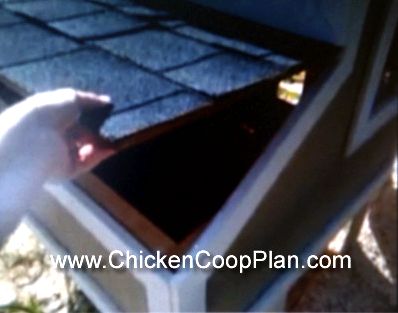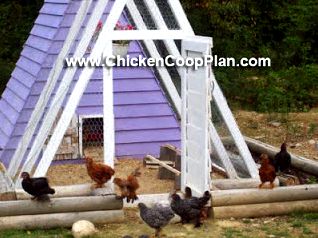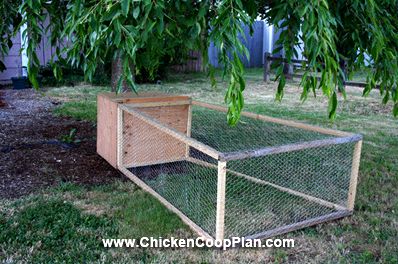1. It’s too challenging the eggs in the nest box.
Whenever you create your coop, bear in mind that it needs to be simple to collect in the eggs rapidly. Anything you do, don’t allow it to be too nearly impossible to find towards the eggs – crawling to deal with and knees through chicken waste is one thing you’re going to get frustrated with pretty rapidly even when there’s something nice in the finish from it. Some coops are made so it’s not necessary to get into them whatsoever to gather the eggs. They’ll frequently simply have some type of door or flap to gain access to the nests from outdoors such as the one proven below. Should you choose choose a design by having an outdoors nestbox access make sure to make certain the issue is safe (some predators for example raccoons can see how to lift easy catches and also have the ‘nimble fingers’ to do this).

2. It’s impossible to maneuver, that which was supposed to have been, a mobile coop.
This occurs quite a bit. Large mobile coops that possibly began off a bit overweight to become easily moveable after which with time appear to possess gradually and shateringly grown roots. Possibly designed so the owner could move it by linking a truck or tractor every time they want.
Regrettably, with time, ‘whenever’ can certainly become never.
So the coop sits in a single place.
Rather, if you wish to move your coop around regularly it’s most likely much more likely you’ll do if you plan so that it is moveable on your own or with 1 body else. Otherwise, possibly set it up like a stationary coop.
When the coop is moveable the chickens can get access to fresh earth from time to time which may be great for sanitation along with a ‘wire skirt’ might help prevent diggers. Just one benefit of the stationary coop is the fact that more attention could be compensated to predator proofing for example digging lower wire or concrete etc that is clearly not necessarily possible having a mobile coop (a minimum of not if you would like so that it is easily moveable).

The above mentioned A-frame coop is within theory moveable by 1-2 people if constructed with light-weight wood however it could easily grow roots and be a far more permanent fixture (either accidentally or intentionally).
3. It’s too hard to wash the coop frequently enough.
Like the issue of creating egg collection easy, additionally you don’t want to be stooping a great deal or crawling about through chicken muck to try and clean the coop out. Ensuring your coop provides you with access to clean out is a vital consideration – good ventilation and regular cleanouts might help prevent illnesses and amonia and dirt accumulating within the coop. Many people use an in-depth litter method but that also needs managing and thus quick access is usually a good factor.

"Get Immediate Access To 10 Complete Chicken House Designs!"
Over my many years of publishing the Keeping Chickens E-newsletter I’ve had several teams of coop designs produced that have effectively been utilized in building many backyard chicken coops. I’ve come up with an accumulation of chicken house designs which include the diagrams and plans useful in helping build them, but many importantly that aren’t just suggestions for coops, but real coops which have really been built and used. You will get additional information here : http://www.ChickenCoopPlan.com

Resourse: http://successwithpoultry.blogspot.com/2013/06/
Tags: chickens, keeping, raising
Comments are closed here.
